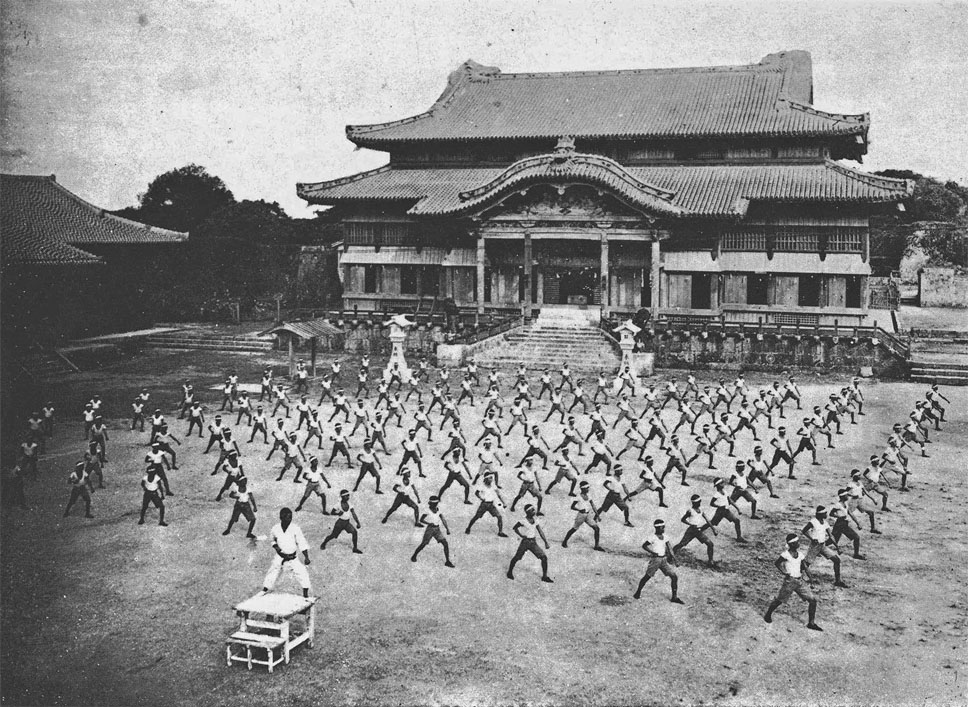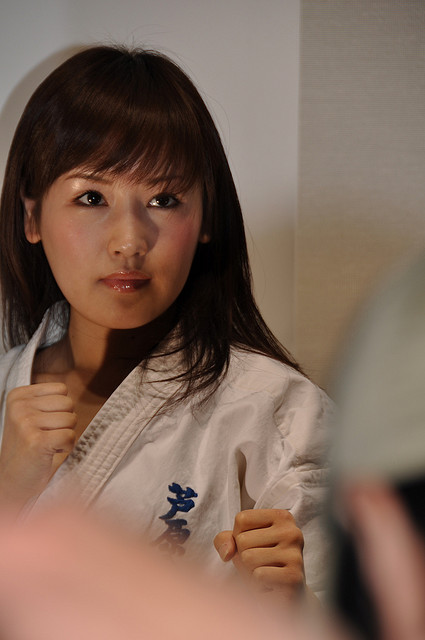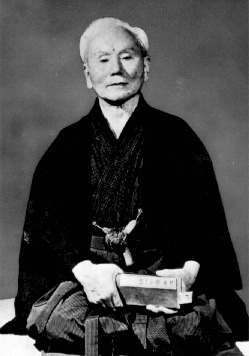Karate 空手 is an extremely popular martial art with between 50 to 100 million practitioners throughout the world, depending upon the source, and has been considered for inclusion in the Olympic Games. There are countless branches of the sport, which vary from no physical contact with an opponent to knock-down fighting. It is practiced for sport, cultural understanding, self-defense and physical reasons. Despite the differences, all of the styles have their roots in Okinawa.

Karate is a blend of indigenous Ryukyu martial arts and Chinese kenpo. At the end of the 14th century, many Chinese families moved to Okinawa as part of a cultural exchange with the Ryukyu people. The martial arts that arose was called “karate,” using two kanji (唐手) which mean “Chinese hand.” It used punches, open hand strikes, and elbow strikes, but also kicks and knee strikes.

Karate Girl (photo: kanegen/flickr)
Commoners were banned from carrying weapons, and it was strictly enforced after a battle in the 1600s, so karate was an important skill for self defense. It was demonstrated in Japan and gained popularity there in the early part of the 20th century. In the 1930s, Japan was pushing a heavy military campaign in China, so the kanji was changed from “Chinese hand” to (空手) “empty hand,” though the pronunciation is the same.

Shōtōkan-ryū founder Gichin Funakoshi (Photo credit: Wikipedia)
An influential Japanese practitioner called Gichin Funakoshi modernized the sport and standardized many of the features after spending time studying in Okinawa. He introduced the system of colored belts and white uniform, called a dogi, among other things. After WWII, many American servicemen stationed in Okinawa became interested in karate.
This video of Worlds Karate Legend MORIO HIGAONNA Goju-ryu Master 10th Dan is a interesting watch. He is described as ‘The most dangerous man in Japan in a real fight’.
The explosion of martial arts movies in the 1960s and 1970s brought it to the public eye, and it became exceedingly popular among people from all over the world. The flamboyant movie portrayals and modern karate are different from that practiced centuries ago, but they still have their origins in Okinawan karate.
